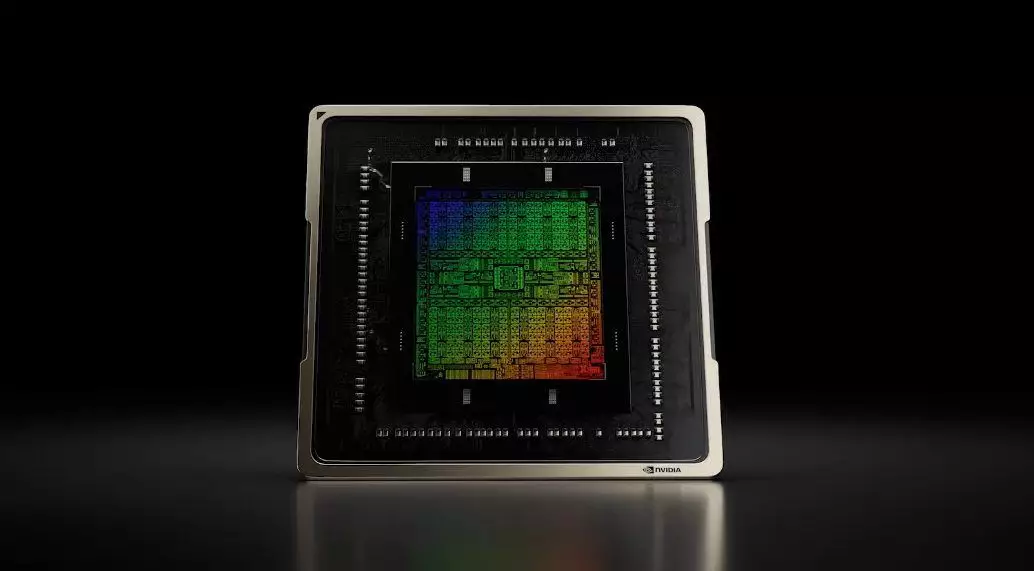The tech landscape is continuously evolving, and Nvidia is poised to make a significant impact with its rumored entry into the Arm processor market. For gamers, this could signal a new era of gaming laptops that blend performance with efficient power consumption. Yet, as with any speculation in the tech industry, one must approach such claims with a healthy dose of skepticism. Recent rumors, primarily originating from tech commentator Moore’s Law is Dead (MLID), hint at ambitious plans that Nvidia has in store. Let’s delve into the implications of this rumored new Arm-based APU and what it could mean for the gaming community.
Sources suggest that Nvidia is gearing up to release its Arm-based Accelerated Processing Unit (APU) by late 2025 or early 2026. This timeline aligns with previous reports indicating that production of these chips may start soon. The idea of an APU capable of delivering performance benchmarks similar to Nvidia’s RTX 4070 mobile GPU—while being more power-efficient at around 80W—raises intriguing possibilities for gaming laptops. These machines could provide the necessary performance to match competitors such as AMD’s upcoming Strix Halo series, which is expected to set new standards in mobile computing.
It’s no secret that creating powerful yet energy-efficient processors has become a critical factor in today’s tech market. As gaming laptops become more popular, companies are prioritizing improved performance per watt. With Nvidia entering this segment, it signals a willingness to disrupt traditional notions of gaming laptop capabilities and deliver high-quality graphics and processing power, even in slim form factors.
The Collaboration with Alienware
One of the more intriguing aspects of the rumored Nvidia APU is its purported collaboration with Dell under the Alienware brand. Historically known for its high-performance gaming rigs, Alienware partnering with Nvidia could point to a new breed of laptops designed specifically for gamers demanding both power and portability. If successful, this could establish a formidable line of gaming laptops characterized by advanced cooling solutions, customizable RGB lighting, and powerful CPUs/GPUs based on the Arm architecture.
For consumers, this partnership raises the expectation that these laptops will not only deliver exceptional gaming experiences but also boast an attractive design and innovative features, often associated with the Alienware brand. If Nvidia’s APU can indeed rival AMD’s offerings, we are likely to see a heated competition that benefits the end-user.
The competitive landscape is about to witness a significant shift. With AMD’s Strix Halo series expected to deliver impressive specifications—such as 40 RDNA 3.5 compute units and 16 CPU cores—the stakes are high for Nvidia. The company not only faces the challenge of matching AMD’s performance but also differentiating its products in a crowded market. As the rumored APU is expected to have an integrated Neural Processing Unit (NPU), Nvidia’s ability to incorporate AI functionalities into gaming may offer a unique selling point.
Nvidia’s historical prowess in graphical performance means that gamers might see considerable advancements in real-time ray tracing, AI-enhanced graphics, and overall gaming experience. Should the APU deliver on its performance targets, it could reshape the expectations around mobile gaming, transforming it into an experience historically reserved for desktop setups.
The Road Ahead: Windows on Arm
One of the more pressing questions regarding the successful implementation of Nvidia’s Arm-based APU is the viability of Windows on Arm. Historically, this has been a stumbling block for companies attempting to break into the market. Yet, with potential partnerships and purported improvements aimed at enhancing Windows’ performance on Arm, there is hope that Nvidia’s intentions could provide the necessary impetus for a successful transition.
If the latest updates to Windows, including support for AVX and AVX2 instructions, can facilitate a smoother gaming experience on Arm devices, Nvidia’s planned APU could be perfectly timed to take advantage of this. Gamers are eager for more versatile options and fewer restrictions when it comes to the software running on their machines. Should these chips enable a more extensive library of game compatibility, it could mark a significant turning point for the industry.
As the speculation continues, the potential for Nvidia’s Arm-based APU to disrupt the market raises both excitement and anticipation. The future of gaming laptops could very well hinge on how effectively Nvidia can combine efficient power usage and robust performance. If the company succeeds in aligning its innovations with consumer expectations and current technological demands, it could usher in a new age of gaming on the go, catering specifically to an audience that values both performance and portability. As we await more concrete information, one thing remains clear: the battle for the best gaming laptop is just beginning.


Leave a Reply